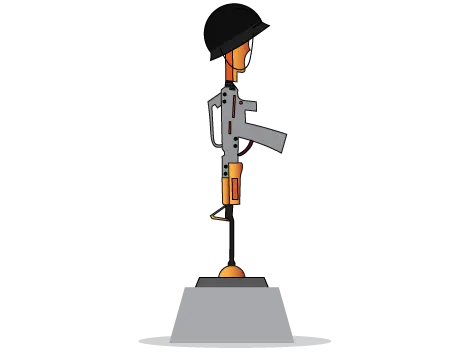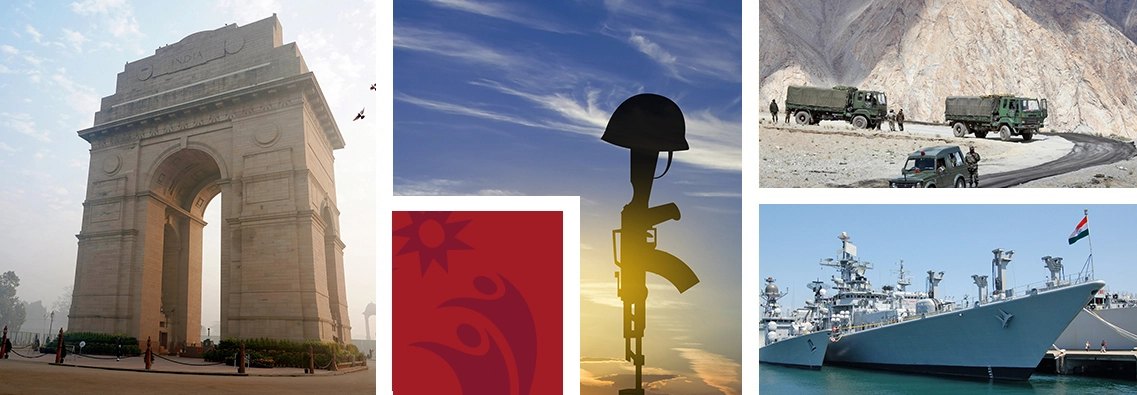The Indian Armed Force is ranked the 4th mighty military force in the world hiring more than 1.2 million active members. The Armed Forces Personnel are a valuable part of the human Capital-National building resource pool.
Almost 55,000–60,000 serving personnel come out every year, some at a very early age, at the end of the thirties or early forties. These personnel who’ve been released from the military services- Army, Navy, and Indian Air Force, join the fraternity of military veterans. Research has predicted that by 2027 we shall have a population of 1.6 million retired Armed Forces Personnel.
Leaving us with a question – are we ready as an ecosystem? How do we align with unique contemporary opportunities available for this cohort? Our research has identified areas of scope.


 Family & Close Circle:
Family & Close Circle:
Military personnel’s work demands traveling to different parts of the country, some of them being in remote pockets of India. Their families are forced to live separately for a long duration. But they all look forward to that moment in time, to be together. The armed forces personnel’s eagerness to connect with their family after bonding through distances is evident. It is this similar genre of emotional connect they look for even from their larger community, during and after their service. They have connected with their countrymen while being in uniform, and after the transition, standing shoulder-to-shoulder, honing the same pride.
 Life led by meaning & Purpose:
Life led by meaning & Purpose:
Donning an uniform brings a sense of joy, meaning and purpose to every military personnel and their close circle. A routine around their physical fitness, social bonding, and self-discipline gets tweaked when they step out of this structured organization. It is before, during and after their transition into the civilian life that the Armed Force Personnel appreciates work and business opportunities that tap into their mental agility, creative cognitions, and team comradery; work profile and social space to cherish the symbolic pride of uniform during the transition is an enriching experience.
 Money Matters:
Money Matters:
Military postings are about moving and transitioning to different parts of the country, and to other countries as well, at times. Expenditures mostly include basic necessities like school fees of their children or buying groceries. The monetary pinch is highlighted during their transition into the civil. From managing finances to investing it right way, there is scope for clearing the financial upheaval for an AFP.
 Rebooting Career:
Rebooting Career:
Retiring from the military and reintegrating into civilian society requires acculturation, demarcating the beginning of a new chapter in one’s life. Armed Force Personnel shifting into an urban setup encounters steep rise in cost of living. Safety and security are the larger goals of the military system; however, personnel’s skills and knowledge to step into vivid roles based on their strengths and interests go beyond the security role profile, which needs to be matched with job and business opportunities that mimic what the military is offering.
 Digital Upskilling:
Digital Upskilling:
Upgrading military weapons and refining warfare tactics is an everyday affair for an AFP. ‘More on ground, less on digital platforms’ defines their portfolios. Resettlement among their civilian counterpart’s highlights need for transition of their knowledge and skills for sustenance and accommodation in the digital era. Digital upskilling supports in creating digital footprints, connecting with their colleagues and diluting the generation gap.
Voices
“People may perceive a veteran job candidate as brave, calm under pressure and having a get-it-done kind of attitude,” he said. “But the way the economy is moving, many new types of jobs also require creativity, interpersonal skills and emotional capacity. “ – Army Veteran
*
Did You Know?
The population of retired Armed Forces Personnel will be 1.6 million by 2027, according to studies.
**
Ecosystem Partner



